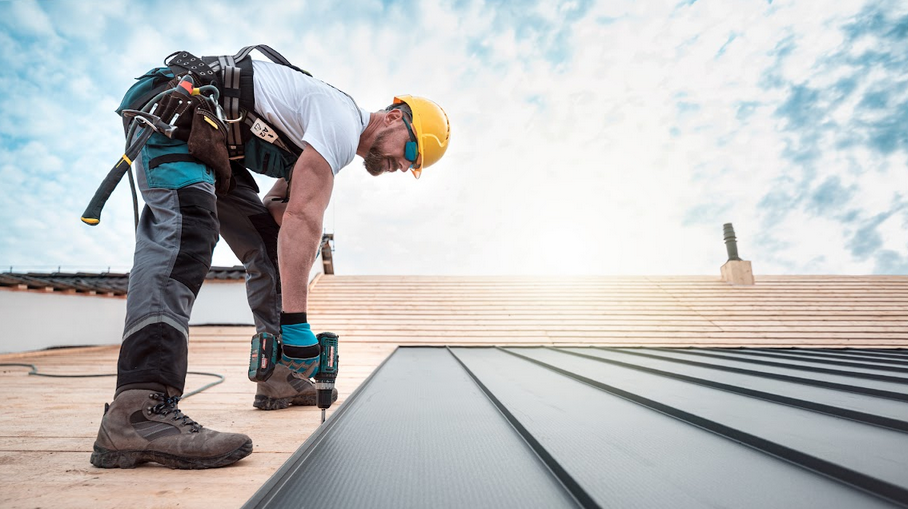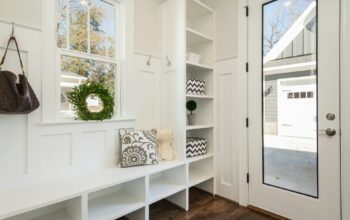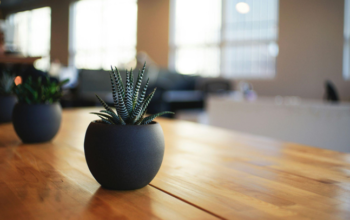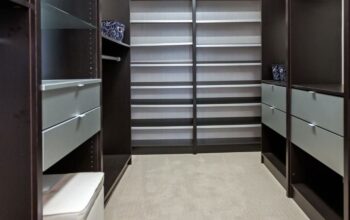Embarking on the journey of owning or renovating a home is filled with many decisions—some easy and some that require a bit more research. One such choice is deciding on the type of roof for your sanctuary, often referred to as ‘House Roofing Sheet.’
Now, you might have heard about metal roofing or seen them on tops of houses across neighborhoods. And as a first-time homeowner or a seasoned home veteran, you’re wondering if it’s all it’s hyped up to be.
Want to know what makes it such a standout? Read on to discover why a metal roof might be the crowning glory of your beloved home.
The Basics Of Metal Roofing
Metal roofs are metal sheets or tiles that offer protection from weather, wind, and sun. Traditionally, they’re the preferred choice for commercial and industrial buildings, but today, they’re adorning residential homes with style and flair.
Metal roofs come in various types: standing seam, corrugated, metal shingles, and stone-coated. They also come in different materials—steel, copper, and zinc. Each metal roofing type and material comes with benefits, making metal roofing an alluring option for homeowners.
Shining Advantages: The Unbeatable Benefits Of Metal Roofing
Beyond its sleek appearance and different types, you probably wonder, “What’s in it for me?” Sit tight because you’re about to discover the gleaming perks of crowning your home with metal. Whether you’re seeking longevity, safety, or more, you’ll find that metal roofing has got you covered—literally!
- Longevity
Ever dreamed of a roof that stands the test of time? Metal roofing can last 40-70 years, outlasting asphalt roofing, typically lasting 12 to 20 years. Some metal roofing types, such as copper or zinc, can last over 100 years.
- Durability
Mother Nature’s tantrums don’t stand a chance against metal roofing. These roofs withstand gusts up to 140 miles per hour and resist damage from hail, heavy rain, and even pesky critters.
Unlike traditional roofing materials that might warp, crack, or erode over time, metal remains steadfast, requiring less frequent replacements. Think of it as a shield—both stylish and stalwart. It stays vigilant, guarding your home through seasons and storms alike.
- Safety
No spark, no fire. Metal roofs are superior when it comes to fire resistance. While wood shingles can be a tinderbox and asphalt can smolder, metal roofs won’t ignite or spark during a wildfire or a lightning strike. Moreover, their strong structure and material can help prevent roof collapse from heavy snow or severe weather events.
It’s like having a silent guardian on top of your home, ensuring peace of mind and an added layer of protection for your family and prized possessions.
- Energy Efficiency
Metal roofs don’t just look cool; they keep your home cool, too! Their reflective properties mean they bounce back the sun’s UV rays to prevent your attic and home from turning into an oven during the sweltering summer months.
During winter, metal roofs work in reverse as they absorb the heat and insulate your home. No matter the season, your AC and heater don’t get overworked, leading to a comfortable indoor environment and substantial savings on your energy bills by as much as 25%.
Metal roofing gives your home an excellent green upgrade for the environment and your wallet.
- Increases Property Value
Investing in a metal roof isn’t just about immediate returns such as savings and safety; it’s also a strategic move to boost your home’s resale value. Metal roofing can be a game-changer for your property’s worth in several aspects.
For one, metal roofs are known for their long lifespan and durability. When prospective home buyers see your metal roof, they’ll know they won’t have to replace it soon.
The different colors, styles, and finishes of metal roofs can enhance a home’s aesthetic appeal. They fit into modern and traditional architecture, making homes stand out in the neighborhood.
Eco-conscious buyers may also find metal roofs a plus because they’re energy-efficient and eco-friendly. As mentioned, metal roofs are known for their thermal efficiency, which translates to lower utility bills.
In addition, metal roofs are made from recycled materials and can be recycled at the end of their life. These sustainability features make your property appealing to those who want to live in greener homes.
Indeed, metal roofs can satisfy homeowner’s checklist regarding benefits. Are you thinking about installing one for your home? Check out the following section on how much you’ll need for your metal roofing project.
Pennywise Choices: Costs Associated With Metal Roofing
When considering metal roofing, it’s essential to understand the benefits and associated costs. After all, the price tag is a crucial factor in almost every homeowner’s decision-making process.
Metal roofing is a considerable investment with both upfront and long-term financial implications. Let’s dive into the numbers and see how much metal roofing costs, from roof materials to installation.
- Roofing Material
Metal roofing can be pricier upfront, ranging from USD 150 to USD $600 per square foot area. The price can also vary based on material type (copper, aluminum, steel), design, and roof characteristics (size, slope, and pitch).
Steel roofing is often the most cost-effective metal roofing material. Galvanized steel usually ranges from USD 3 to USD 7 per square foot. Galvalume, a variant coated with aluminum and zinc, may be slightly more expensive.
Aluminum is more expensive than steel but affordable at USD 4 to USD 9 per square foot. Copper is a premium metal roofing option with a price range of USD 15 to USD 30 per square foot. Zinc is at the higher end of the price spectrum, which ranges from USD 10 to USD 30 per square foot.
Remember that the estimates mentioned are for roofing materials only. Prices vary widely, so it’s best to consult local distributors, metal roof companies Wisconsin or manufacturers to get precise quotes.
- Roof Characteristics
The contours and dimensions of your roof play a significant role in determining the installation costs of metal roofing. First, the overall size: a larger roof will require more materials, leading to a higher price tag.
But it’s not just about square footage. The slope and pitch of your roof can also affect installation costs. Steeper roofs can be more challenging (and riskier) to work on. Similarly, a top with intricate designs and installations (skylights, chimneys, sunroof, etc.) requires more detailed work and customization. Metal roofing professionals will assess these vital factors to provide an accurate estimate.
- Additional Items
Aside from the roofing material and style, you’ll also need to budget for other items like fasteners, underlayment, labor costs, and permits. Fasteners keep your metal roof in place, while underlayment is necessary to prevent leaks and for additional insulation. Your metal roof also requires coating to prevent it from cracking and rusting.

Nailing The Process: Essential Tips For Metal Roofing Installation
Stepping into metal roofing installation can feel overwhelming, especially if you’re new to the home renovation game. After all, you want to do it right so your metal roof lasts longer than a lifetime. Get ready as we hammer out the basics and ensure your home gets the top-tier treatment it deserves.
- Hire A Pro
Metal roofing isn’t just slapping several sheets to ensure they’re correctly placed to protect your home. This requires understanding the materials and a meticulous approach to ensure the roof’s longevity and effectiveness.
While the allure of DIY installation might be there, it’s always advisable to lean on the expertise of professionals. Turning to skilled contractors guarantees the installation meets the highest standards and safety measures. After all, a roof is a long-term investment, so getting it right from the start is crucial.
- Preparation Is Key
Before diving headfirst into a metal roofing installation, much groundwork must be done. Firstly, assess the current state of your roof. Any signs of damage or wear need addressing before layering on the metal. It’s not just about laying sheets atop; it’s about ensuring a stable, secure foundation for them.
Next, gather all the necessary materials and tools. A well-prepared workspace can streamline the installation process and prevent unwanted hitches. This means having roofing panels, proper underlayment, fasteners, and safety gear.
Additionally, familiarize yourself with local building codes and regulations. Each area might have specific roofing materials, slopes, and more guidelines. Being informed prevents legal headaches and ensures a smoother installation journey.
In essence, rushing the process without due preparation can result in costly mistakes. But with thorough groundwork, you’re setting the stage for a successful and long-lasting metal roofing installation.
- Installation Time
When considering the duration of installation, metal roofs can often be quicker to install than some other materials, especially if you’re working with professionals adept in metal roofing techniques. The large panels used in metal roofing can cover a bigger area in less time than individual shingles or tiles.
However, the exact installation time will hinge on various factors. For instance, if the underlying roof structure needs repairs or has many intricate details, dormers, or valleys on the roof, it can extend the installation timeline.
Moreover, weather conditions play a pivotal role. While metal roofs can be installed during various seasons, extreme conditions like heavy rain, high winds, or snow can delay the process.
When planning the installation, it’s wise to factor in some buffer time for unforeseen delays, ensuring a seamless and efficient roofing transformation.
Keep It Gleaming: Metal Roof Maintenance
One of the advantages of metal roofs is that they require minimal upkeep. Here’s how to keep them looking and functioning their best:
- Regular Inspection
It’s best to perform roof checks at least twice a year or after any severe weather event. Look out for any loose nails, screws, or other irregularities.
- Clean And Clear
Keep your metal roof clean by removing dust and debris with a garden hose and mild detergent. Laundry bleach diluted with water can also remove stubborn stains. It also helps to trim trees on your property so their branches do not end up on the roof or gutters.
- Mind The Finish
Your roof’s coating can wear off due to exposure. If you spot any chipped or faded areas, consider a re-coat to keep it looking fresh and ensure longevity.
When performing these regular roof maintenance tasks, always ensure your safety. Wear the proper footwear and wear protective equipment like goggles and gloves when cleaning. Clean only what you can reach, and for more multi-level roofs or other concerns, it’s best to contact a metal roofing specialist.
Wrapping Up
Metal roofs are a significant investment for your home and family. Understanding the benefits and associated installation costs can help you decide if metal roofing is best for your new home or fits your home renovation budget. As always, it’s best to compare roofing material prices and installation quotes and seek professional help.
Besides installation, homeowners should also perform regular maintenance to keep their metal roofs in tip-top shape. These simple tasks can prevent further issues so you can reap all the benefits of metal roofing.
Related Posts

Loves home. I am here to provide how to make your home a much better place. 🙂 Blogging about HomeDecor, Home Improvements and more.











